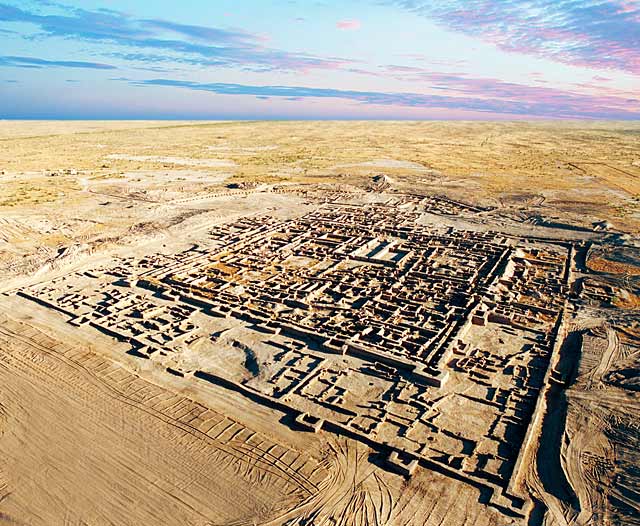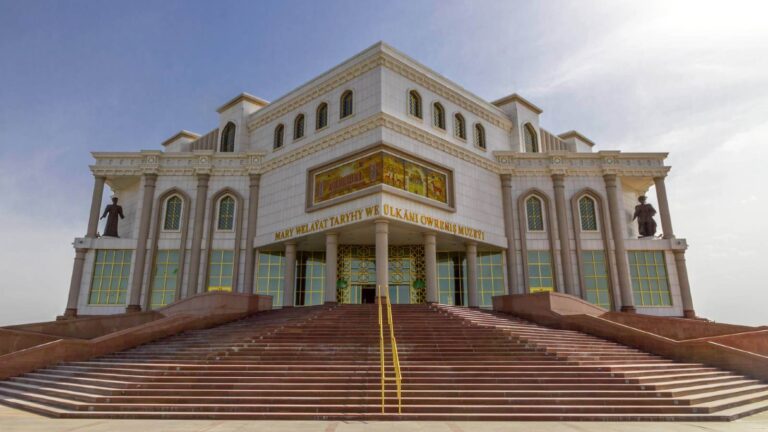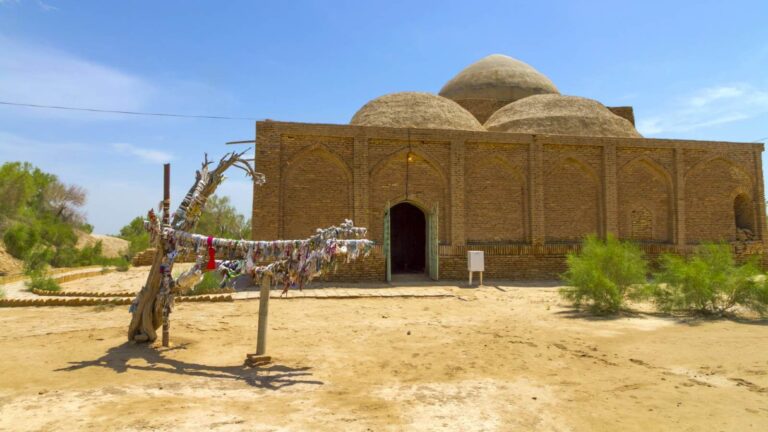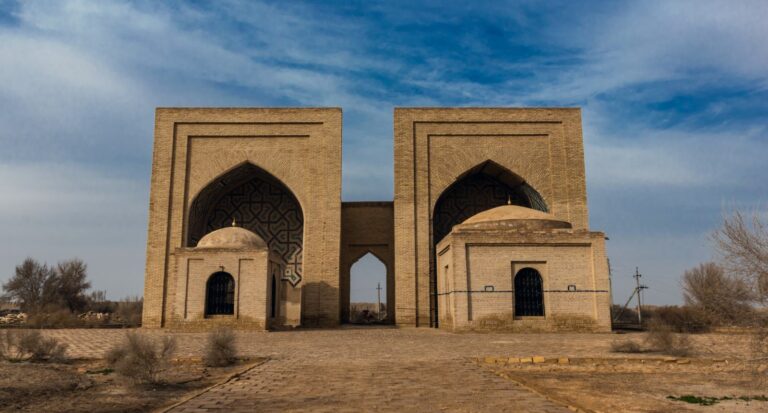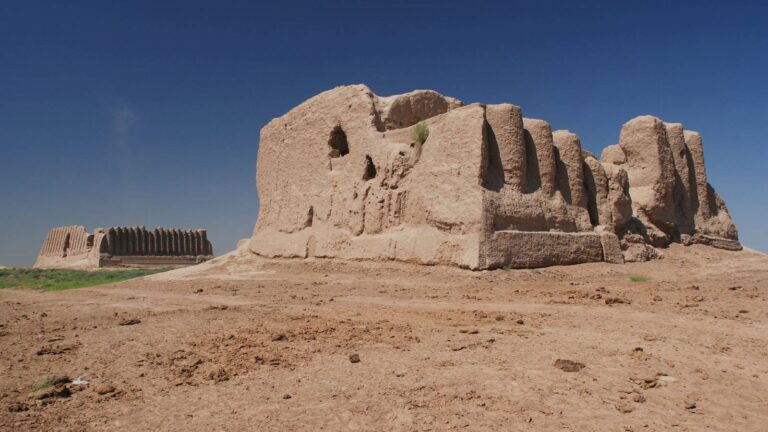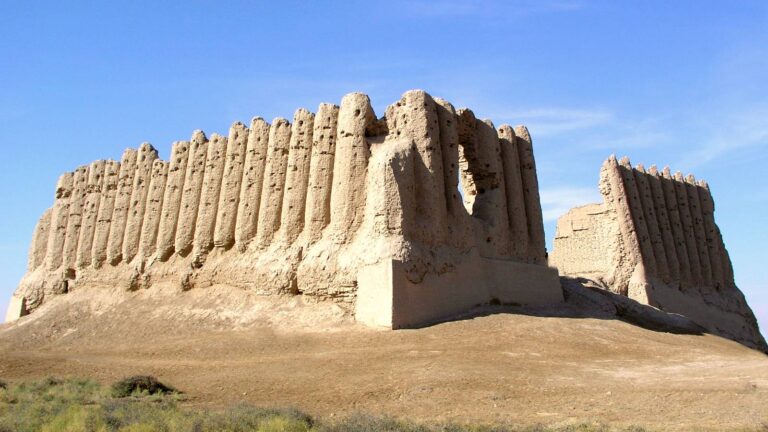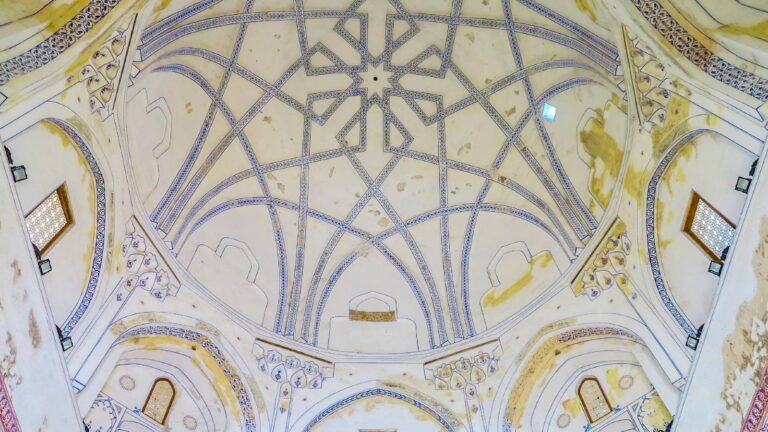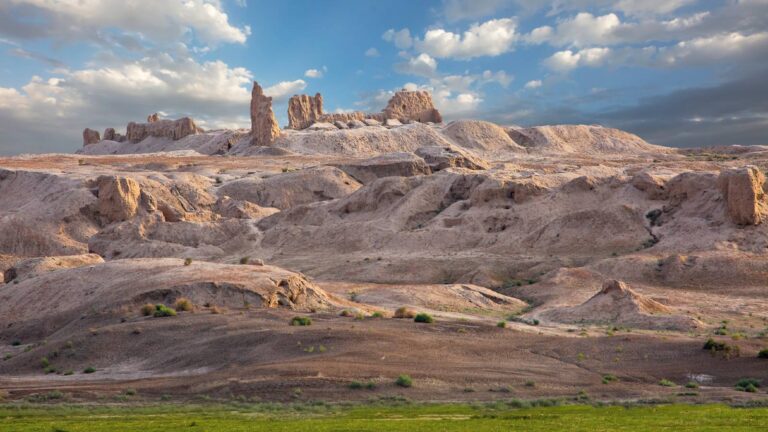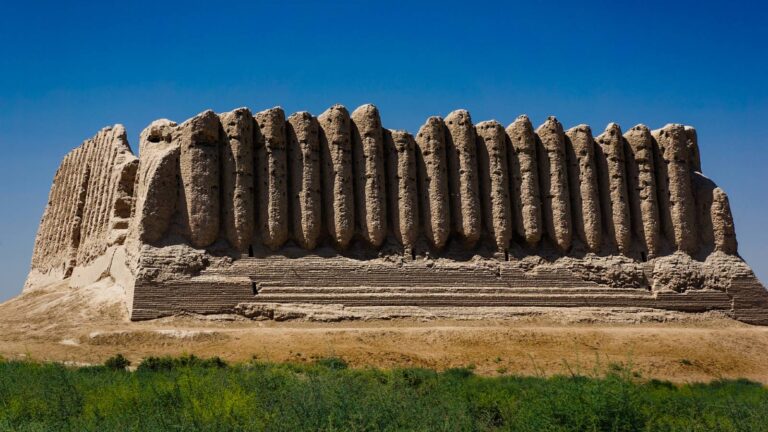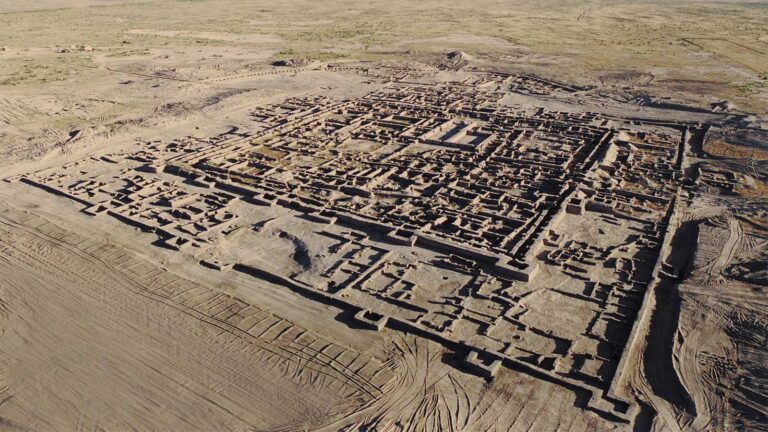Getting There
Gonur is a two-hour drive from Mary and you’ll need at least two hours there. A 4WD is required as the final 20km of road is a rough dirt track.
What to Expect
The scale of the huge complex which spans some 30 hectares can only be properly appreciated from the air, from where the former buildings look like a maze in the desert surrounded by vast walls. Just 50 kilometers (30 miles) from the celebrated ancient city of Merv outside the modern city of Mary, the ruins of Gonur-Tepe are an indication of the archeological riches of Turkmenistan.
History
Gonur Depe is an archaeological site, dated from 2400 to 1600 BCE, and located about 60 km north of Mary (ancient Merv), Turkmenistan consisting of a large early Bronze Age settlement. Around 2,000 BC, Gonur-Tepe was the main settlement of the Margush or Margiana region that was home to one of the most sophisticated, but little-known Bronze Age civilisations.
The site was discovered in the 1950s by Greek-Russian archaeologist Viktor Sarianidi, and excavated in the 1970s. Sarianidi uncovered a palace, a fortified mud-brick enclosure, and temples with fire altars which he associated with the Zoroastrian religion.
Gonur Depe has a total area of about 55 hectares, and is divided by archaeologists in three main sectors: Gonur North, the Large Necropolis, and Gonur South. The northern part of the complex called Gonur North had a central citadel-like structure about 100 by 180 m (330 by 590 ft) in size.
Facilities Available
No facilities

